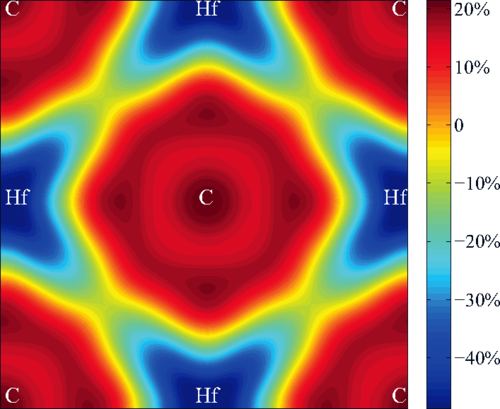New research predicts it is possible to create a material with a record-setting melting point that would have a good chance of staying intact, even at the insane temperatures in places like the outer edges of Earth's core. Computer simulations run by a team from Brown University find that a precise combination of hafnium, nitrogen and carbon would have a melting point of 4,400 kelvin (7,460° F/4,127° C).
As demonstrated through computer experiments, the material would have a higher melting point than any known substance by at least 200 kelvins and could possibly even stay intact in the coolest layers of the sun (although it would have to somehow get through the blazing hot outer corona first).
The current record belongs to a material made of a combination of hafnium, tantalum and carbon (Hf-Ta-C), but the new simulations predict that just the right amounts of hafnium, nitrogen, and carbon (HfN0.38C0.51) could withstand even more heat. Researchers are currently working to synthesize the substance so that they can test it in a lab.
Nitrogen and carbon are, of course, quite abundant elements, but the lesser known hafnium is used in control rods in nuclear reactors, in vacuum tubes and in the creation of alloys based on metals such as iron and titanium.

It's not clear if the new material itself will actually be useful, even if it does hold up as well as expected when exposed to extreme heat.
"Melting point isn’t the only property that’s important (in material applications)," says Axel van de Walle, associate professor of engineering at Brown and co-author of a paper on the research. "You would need to consider things like mechanical properties and oxidation resistance and all sorts of other properties. So taking those things into account you may want to mix other things with this that might lower the melting point. But since you’re already starting so high, you have more leeway to adjust other properties."
Ultimately, he says the work could help inform the development of materials for use in gas turbines or heat shields on high-speed aircraft, among other possibilities.
Brown's paper was recently published in the journal Physical Review B.
Source: Brown University





